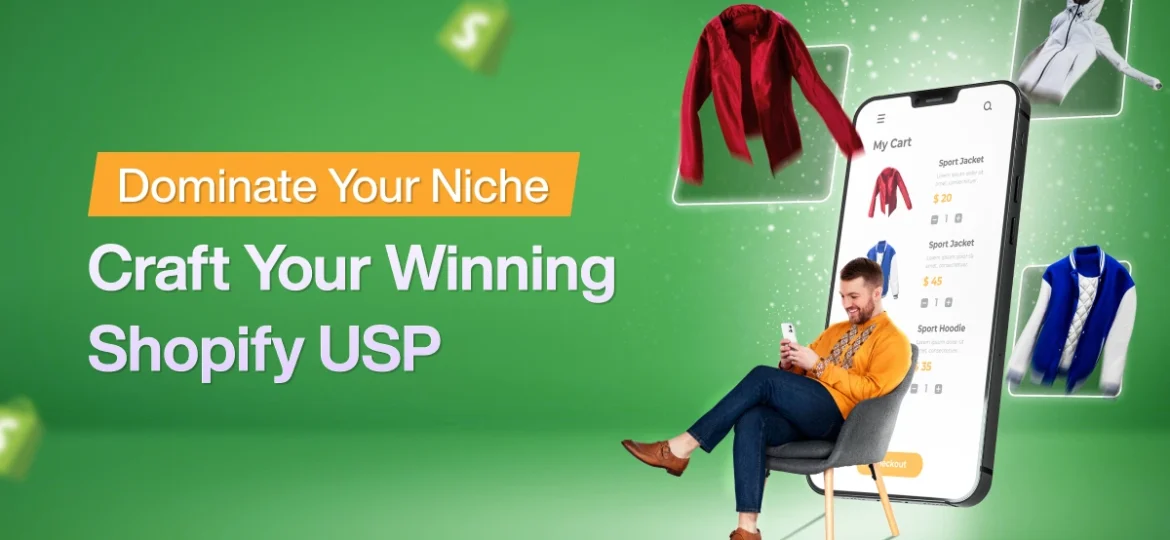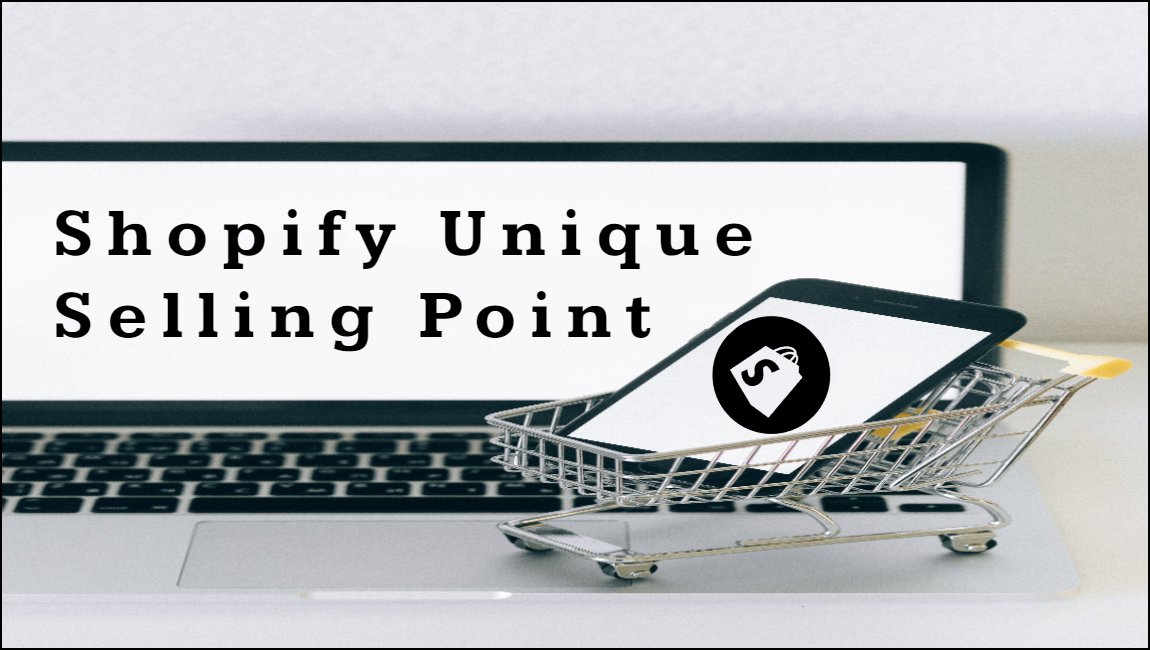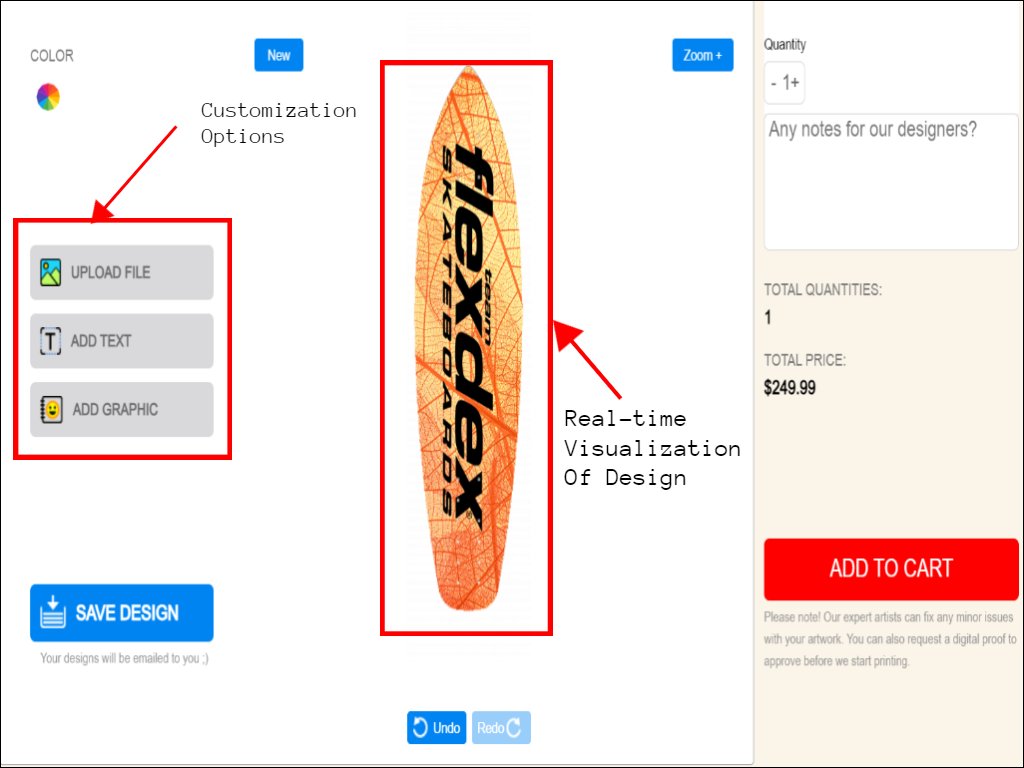
Last Updated on February 14, 2025 by Rakibul Islam

Shopify is one of the largest e-commerce platforms out there. If you want to launch an online store, only a few alternatives can match the utilities Shopify provides. From the Shopify Theme store to allowing third-party apps, Shopify is a one-stop platform to launch your online store and refine your Shopify USP (Unique Selling Proposition).
Due to its accessibility, Shopify is very popular. Over 4 million websites are using Shopify to sell goods and services across 175 countries according to Demandsage. That is stiff competition for any newcomers to the world of e-commerce.
One strategy that businesses use to differentiate themselves from the competition is coming up with a unique selling proposition (USP) for their Shopify store. In this article, I will explain what a USP is and how you can write one for your online store. As a bonus, I will reveal a secret that will help unlock your Shopify unique selling proposition.
Unique Selling Proposition Explained
A unique selling proposition or USP is a statement or a couple of sentences that highlight what is different about your store compared to others. It can contain what your store provides or the benefits it offers that others don’t. Its main job is to let your customer identify the benefits you provide that are so special.
A unique selling proposition has these five main components to it:
- The benefits you are providing to your customers.
- Answer the who, what, and how you are providing to customers.
- A key selling point that makes you different.
- What makes you different from your competitors?
- Making customers buy from your store instead of your competitors.
USP And Brand Slogan: What Are The Differences?
Often people confuse a USP with a brand slogan. Where a USP helps to highlight and differentiate your brand, a brand slogan is what makes your store memorable. Think of a slogan as your store’s unique identifier.
Take for example Nike’s famous slogan “Just Do It”. Nike is a sporting goods company but “Just Do It” does not explain the company’s features. It does not answer the fundamental questions that a USP does.
Nike’s actual USP is to inspire people who are passionate about sports through their products and endorsements of famous athletes. People feel connected with Nike when they see athletes they are fans of wearing Nike products. That is Nike’s USP and its brand slogan helps to capture that particular essence: you can be just like your sports hero wearing Nike products.
Now let’s look at Domino’s Pizza’s USP: “You get fresh, hot pizza delivered to your door in 30 minutes or less, or it’s free.”. There are many pizza stores around the world. But what makes Domino’s unique here is that they guarantee you get them in under 30 minutes or it’s free. They differentiate themselves from the competition by telling you that you will get your pizza faster than other stores. This differentiation is what makes Domino’s feel unique.
Making A Shopify Unique Selling Proposition In 7 Steps
So now that we got to know what a unique selling proposition is, how do you go about writing a USP? Coming up with a USP requires careful consideration because being unique in e-commerce can be difficult to nail down. In these 7 steps, you can get started on making your Shopify unique selling proposition:
- Identify Your Target Audience
- Listing Customer Pain Points
- Analyzing Competitor Shopify Store USPs
- Note Down The Benefits You Can Deliver
- Finding What Makes Your Store Unique
- Compile All Information And Write Your USP
- Apply Your USP On Your Shopify Store
Step #1 Identify Your Target Audience
The very first thing that you need to do for your USP is to figure out your target audience. Who you are selling to is very important for a USP because you want to target them in your USP. With so many competitors for your store, you will want to target and segment the customers that you want to provide for. Here, knowing your target demographic and your customer’s purchasing habits are key factors to help write your store’s USP.
Step #2 Listing Customer Pain Points
Once you have figured out your target audience, you can start figuring out how your store can answer the customer’s pain point. Note down all the possible pain points your target audience is facing. The reason for this is to see what your products can solve for your customers.
Specifically for your USP, you want to find out pain points by asking yourself these questions:
- Is the buying process smooth
- Are they satisfied with the quality of the product
- Are the products priced correctly
- Can your products meet any unmet needs of the customers
- Are they getting products delivered on time
- Are the customers abandoning their carts
These are some of the basic questions that you can ask yourself or your customers to find out their pain points. The list can be over 100 different pain points as well. Listing as many down as possible will help make it easier to write the USP that will answer the key pain points for your customers.
Step #3 Analyzing Competitor Shopify Store USPs
You cannot come up with a USP without knowing what your direct competitors’ USPs are. Since you are trying to make your Shopify store unique, you don’t want to make the same USP as your competitors. You will only make your customers confused. They will think that these two stores are providing the same benefits.
That is why you need to analyze your competitor’s USPs very closely. It is not just one competitor, but all possible competitors as well. Through competitor analysis, you can find the market gap that will make your store unique. So you need to closely look at what other Shopify stores provide and note their USPs.
Step #4 Note Down The Benefits You Can Deliver
Once your competitor research is complete, it is time to focus on your store and products. You need to mainly focus on the benefits your product can provide. These benefits will come from the features your store provides for the customers.
So start making a list of all the benefits that your store has. It does not matter if your store and a rival store have the same benefits because you are trying to find your unique location. The list will be extensive because you can provide many benefits for your customers. The importance of this step is to find the gap in the market you can target.
Step #5 Finding What Makes Your Store Unique
After researching the different competitors’ USPs, it is time to find the market gap to find what makes your store unique. The market gap is where you will find your uniqueness in the competition. It will be something that other store owners are not talking about.
This gap is where you can make the biggest difference in your USP. It will have to be something that other stores cannot compare. This is where you can find the uniqueness of your store from other stores. The uniqueness is where you can appeal to the customers’ emotions and make them more likely to buy from you.
Step #6 Compile All Information And Write Your USP
So once you have your store’s benefits and find the market gap to target, it is time to compile everything you have so far. All the previous steps lead to this moment: creating your Shopify store’s USP. You have all the information that you need to come up with your USP. But exactly how do you write your store’s USP?
Here are some USP formulas that you can use to help you figure out your store’s USP:
- [Brand/Product/Service] is the only [category] that [unique benefit] for [target audience] by [point of differentiation].
- For [target audience] who want [benefit], [brand/product/service] is the [superlative] that [point of differentiation].
- Solve [pain point] with [brand/product/service], the [adjective] solution that [unique benefit].
- Enjoy [benefit] with [brand/product/service], offering [point of differentiation] for [target audience].
- Experience [benefit] like never before with [brand/product/service], the only [category] that [unique benefit].
- [Brand/Product/Service] delivers [unique benefit] to [target audience] by [point of differentiation].
You are more than happy to use such USP templates but my advice is to create a USP that is unique to your store. Take these USP templates as a way to inspire your store’s USP. It will be better because you can connect your store’s main objectives with your audiences. Just make sure that your USP captures your store’s goals in a short sentence or two.
Step #7 Apply Your USP On Your Shopify Store
If you have come up with your Shopify store USP, that’s great. However, the work isn’t over yet. You now have to apply the USP to your store. The easy answer is to add your USP wherever necessary and where it will get the most visibility.
It is a waste to have your USP away somewhere your customers aren’t able to see. That is why you should make sure that they are placed in prominent places on your store pages. Not only that, but you want to include your USP in your marketing campaigns as well. This will help increase the visibility of your USP and keep emphasizing it for your customers.
Here is a list of places you can include your USP:
- Homepage – especially on the above-the-fold part
- Product page
- About Us page
- Marketing copies
- Email copies
- Advertisement
- Social media posts
This adds to the visibility and helps get your USP to your targeted audience easily.
5 Traps to Avoid When Making A Shopify USP
The steps I have mentioned are a great way to start making Shopify USP. However, some business owners make common mistakes with their USP that discourage customers from shopping at your store. So here are the 5 Traps in making a Shopify unique selling proposition that you should be avoiding:
Trap #1 Making Your USP Too Complicated
First impressions matter in e-commerce, and it matters a lot. The first impression of your store page is what helps convert prospects into customers. If your USP is too long or overcomplicated, the customer will not find your store unique. instead, take their business to a rival store.
Your USP is supposed to be snappy and create an instant engagement with your customers. So make sure that your USP is short and concise to grab the customer’s attention immediately. In addition, your short USP should get the message of why you are unique across to your customers.
Trap #2 Generalizing Your USP/Not Unique Enough
The U in USP stands for unique. When your USP is not unique enough, it means that customers are not engaged with your online store. Less engagement equals fewer sales which equals less revenue and so on. If your USP is too close to your competitors, your target customers will not be able to differentiate the two stores. That is why you should make sure to do proper competitor analysis so that you can create a USP that speaks to your customers.
Trap #3 Trying To Appeal To Everyone
The reason USPs are created is to appeal to your audience. If you try to please everyone, you will end up appealing to no one. When you know who you are selling to, it makes it much easier to appeal to them. Be sure to appeal to them first. If your store and products are good, the customers will come to your store themselves. So mark down your niche customers and appeal to them instead of everyone.
Trap #4 Making False Claims
According to Nosto, 86% of consumers prefer authentic brands when deciding on purchasing from them. That means making false claims on your Shopify store will impact your store negatively. When coming up with your USP, make sure that you portray an authentic product. That way, consumers are more likely to purchase from your store over competitors.
Trap #5 Focusing On Features Rather Than Benefits
For example, let’s say you sell car batteries on your online store. Your USP is that the car battery has a longer lifespan than other car batteries other store owners provide. That is a dangerous trap to fall into because other store owners can see that and change their USP to say theirs lasts longer.
The key here is to not focus on the features but on the benefits your product can provide. Instead of saying your batteries last longer, your USP can instead say something like “A car battery that will not let you down”. The benefits of a longer battery lifespan will spark an emotional response in your customers. That makes for a much better USP than an easily copyable feature of your product. It helps to create the uniqueness that your store provides that others cannot.
Product Personalizer – The Secret To Unlocking Your Shopify Store USP
So what does personalization have to do with your Shopify USP? E-commerce personalization is a big deal for customers. According to reports from Epsilon, customers are 80% more likely to shop with your store because of personalization.
Personalization helps unlock that unique experience for customers in your store. There are many benefits when you add personalization to your online store like brand building. So what type of personalization should you add to your store that helps unlock your store’s USP? The answer lies in using a Shopify third-party product personalizer application.
Take for example this Shopify store using a product personalizer on its product page:

In this personalized skateboard, you have many options to choose from. On the right panels, you can add any text you like, the graphics that the store has put out, and also upload an image of your own. While you are designing, you can see the customization being done in real time to see how the final product will look.
All of these personalizations add to the customer engagement with your store. What they are getting is a product they designed themselves which is what they will like more than a normal product. Customers will feel a stronger connection with the product because they are the ones designing the product.
The store’s USP is “Best carving, long-lasting skateboard on earth”. Now add the personalization that the customers can do for the product. This creates a personal connection with the skateboard and they can be sure it will last.
This is one example of how a product personalizer like the one the store uses enhances the USP of the store. USP captures the audience base and ensures that it will last. Meanwhile, personalization creates engagement with a product that will fill a gap that other stores aren’t providing.
Bottom Line
A Shopify unique selling proposition helps to attract the customers that you want for your store. Making a USP can be difficult at first but with the steps I have outlined, you are on the right path to making a USP for your Shopify store. Just be sure not to fall into the traps while making your Shopify store’s USP. With the addition of your USP, a product personalizer on your store can help unlock your store’s USP, creating more customer engagement and ensuring that your customers are satisfied with your products.

